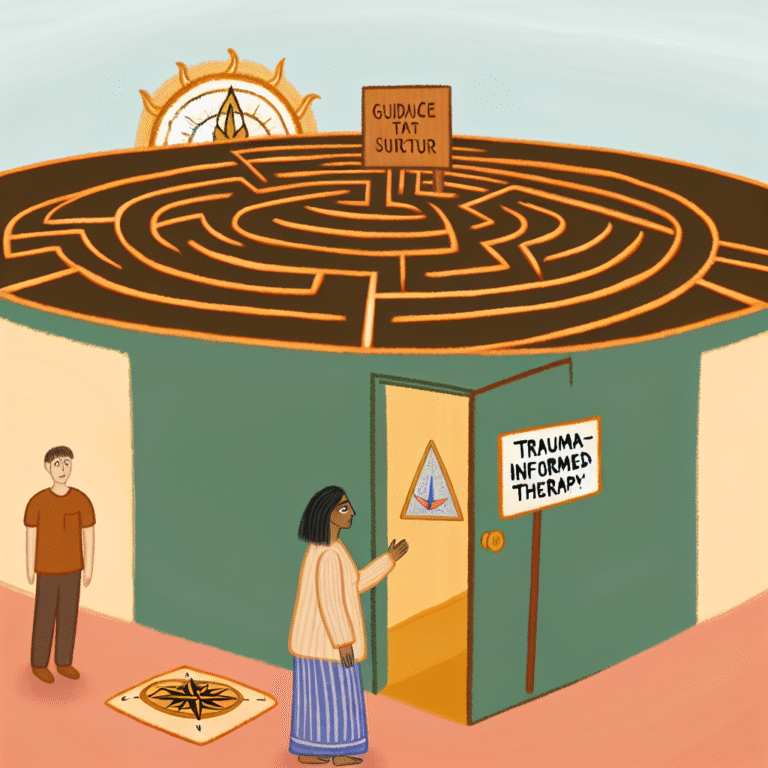
Navigating Adolescence: An Essential Guide to Early Signs of Bipolar Disorder
Introduction
Adolescence is a transformative period marked by significant emotional, physical, and mental changes. During this intense time, many adolescents navigate a whirlwind of feelings and experiences, making it a critical stage for mental health awareness. Among the various mental health conditions that can arise during these formative years, bipolar disorder often goes unnoticed. Navigating Adolescence: A Guide to Early Signs of Bipolar Disorder aims to shed light on this complex condition, equipping parents, educators, and teenagers themselves with the knowledge needed to recognize the early indicators. Understanding these signs can lead to timely intervention, fostering a supportive environment that encourages healthy development.
Understanding Bipolar Disorder in Adolescents
What is Bipolar Disorder?
Bipolar disorder, formerly known as manic-depressive illness, is characterized by extreme mood swings that include emotional highs (mania or hypomania) and lows (depression). While many people associate bipolar disorder with adults, it often emerges during late adolescence, making it essential to recognize the signs early.
Early Onset: Not Just an Adult Condition
Research indicates that early onset bipolar disorder is on the rise. According to a 2020 study published in the Journal of Child Psychology and Psychiatry, there has been a significant increase in diagnosed cases among adolescents. Recognizing the early signs can prevent more severe development of the disorder and offer adolescents the chance to lead fulfilling lives.
Recognizing the Early Signs
Adolescents might not fit neatly into the traditional criteria for bipolar disorder, making it challenging for adults to identify the symptoms that indicate a potential issue.
Substantial Mood Changes
- Mania or Hypomania: Look out for extreme happiness or irritability. A teenager might display an unusual rise in energy levels, increased talkativeness, or racing thoughts.
- Depressive Episodes: Conversely, signs of a depressive episode may manifest as persistent sadness, withdrawal from social circles, or loss of interest in previously enjoyed activities.
Changes in Sleep Patterns
A key indicator of bipolar disorder can be found in sleep patterns:
| Sign of Mania | Sign of Depression |
|---|---|
| Decreased need for sleep | Insomnia or hypersomnia |
| Sleep disruption | Constant fatigue |
Impulsivity and Risk-Taking Behaviors
For many adolescents, impulsivity is a part of growing up. However, when combined with mood changes, this can be a significant red flag. Engaging in activities such as substance abuse or reckless driving may indicate an underlying issue.
Social Interactions
Monitoring changes in social behavior is crucial. Rapid mood changes can affect relationships. Adolescents may withdraw or explode socially, often leading to conflicts with peers or family.
Example Case Study: Sarah
Sarah, a 15-year-old high school sophomore, began to show signs of increased energy and joy during the summer of her freshman year. She would stay up late discussing philosophy with her friends and often spoke of feeling “invincible.” However, as fall approached, her mood shifted drastically, leading her to isolate herself. Recognizing these swings, her parents sought help. Sarah was diagnosed with bipolar disorder and began therapy and medication, leading to an improved understanding of her mental health.
Analysis: This case highlights the importance of recognizing both the manic and depressive phases of bipolar disorder, illustrating how parental involvement can guide towards timely intervention.
The Role of Education and Awareness
In Schools and Communities
Educators and mental health professionals can provide invaluable insights into the signs of bipolar disorder. Creating a framework in schools where mental health education is part of the curriculum can make a world of difference. Students need to learn how to recognize these signs not only in themselves but in their peers.
Parent and Guardian Awareness
Parents often find that they are the first line of defense when it comes to their child’s mental health. Understanding signs and seeking timely intervention is pivotal. Workshops and support groups can empower parents to navigate this challenging landscape.
Navigating Treatment Options
Therapy
Cognitive Behavioral Therapy (CBT) has shown promise for adolescents with bipolar disorder. This therapeutic approach aids in identifying negative thought patterns and replacing them with healthier ones.
Medication Management
While therapy alone can be beneficial, many adolescents may require medication to stabilize mood swings. This must be approached cautiously and under the guidance of a healthcare professional.
Example Case Study: Jake
Jake, a 17-year-old, struggled with depressive episodes that varied in intensity. After seeking help, he participated in CBT and was prescribed mood stabilizers. With a combination of treatment options, Jake learned to manage his emotions better, enabling him to maintain steady grades and friendships.
Analysis: Jake’s case emphasizes a combined approach to treatment. It illustrates that while medication can help stabilize mood, therapy plays a crucial role in cultivating long-term coping skills.
Lifestyle Adjustments for Mood Stability
Healthy Routines
Establishing a daily routine concerning sleep, diet, and exercise can significantly improve mood regulation. Encouraging teens to engage in physical activities not only provides endorphins but also promotes better sleep.
Mindfulness and Stress Management
Practicing mindfulness and stress-management techniques, such as meditation or yoga, can help adolescents better cope with their emotions, reducing the likelihood of extreme mood swings.
Conclusion
Navigating Adolescence: A Guide to Early Signs of Bipolar Disorder serves as a beacon for anyone in contact with adolescents. Recognizing early signs, promoting education, and facilitating timely intervention can drastically alter the trajectory of a young person’s life. Mental health is essential, and prioritizing discussion surrounding bipolar disorder will contribute to breaking the stigma. Together, we can create a supportive network for our youth, ensuring they thrive during what can be a tumultuous phase of life.
FAQs
1. What are the typical age ranges for the onset of bipolar disorder?
Bipolar disorder often emerges between ages 15 and 25, but early signs can appear in earlier adolescence.
2. How can parents support their children in recognizing signs of bipolar disorder?
Open communication, educating themselves about the disorder, and encouraging their child to express feelings can foster an environment of support.
3. Are there many different types of bipolar disorder?
Yes, there are several types, including Bipolar I Disorder, Bipolar II Disorder, and Cyclothymic Disorder, each differing in intensity and frequency of episodes.
4. Can lifestyle changes impact the course of bipolar disorder?
Absolutely. A balanced lifestyle with regular sleep, a healthy diet, exercise, and mindfulness practices can positively affect mood stability.
5. Where can I find resources for support?
Organizations like the National Alliance on Mental Illness (NAMI) and local mental health services provide valuable resources and support for families navigating bipolar disorder.
By staying informed and engaged, we can foster a healthier future for adolescents grappling with this complex mental health condition, ensuring they move through adolescence not just surviving, but thriving.

















